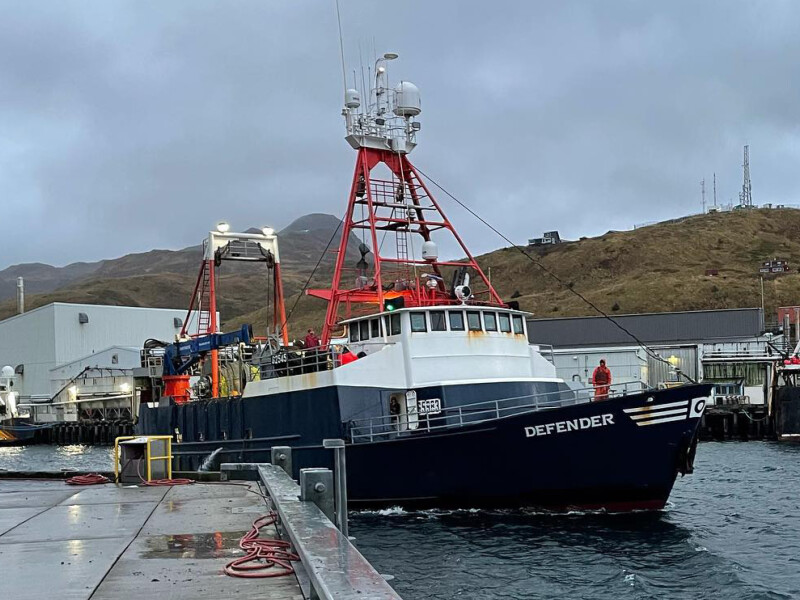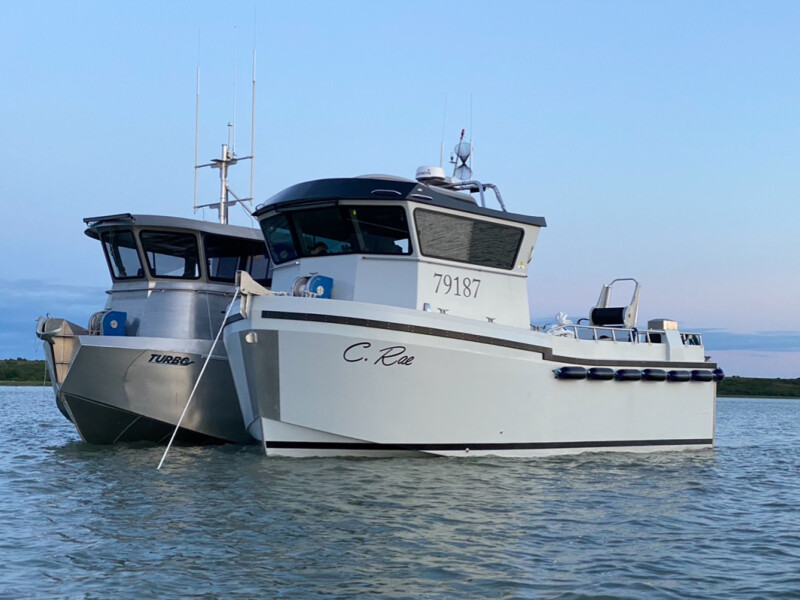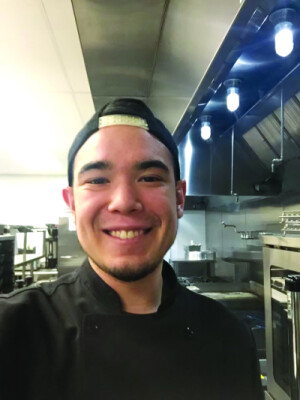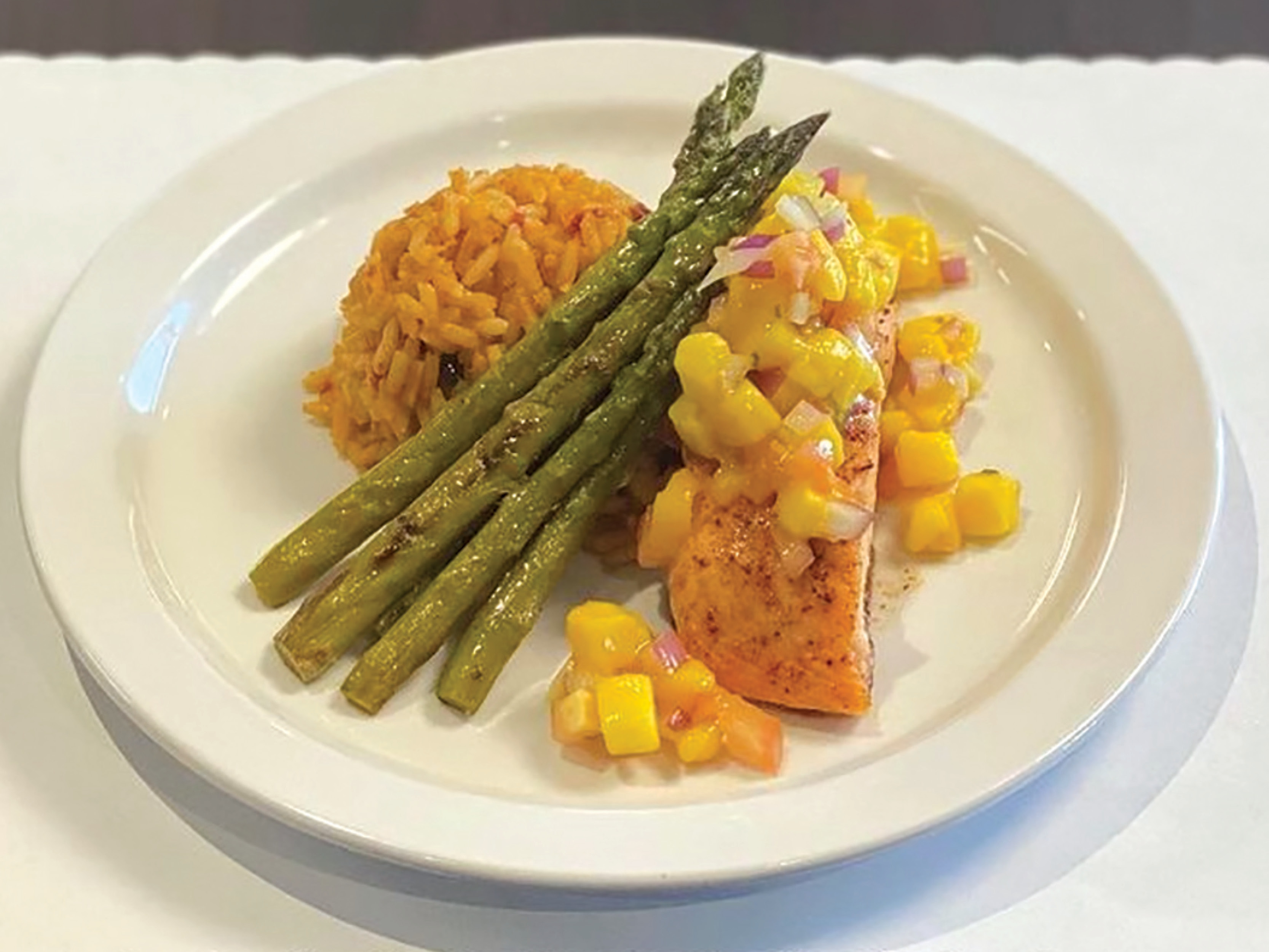Life aboard a commercial fishing vessel is a test of endurance. The joys of being hunter-gatherers at sea come with hardships and sacrifice.
But thanks to talented chefs at sea, eating well can be a benefit of this otherwise grueling work. The generation of fishermen that could remember salt pork and hardtack is long gone.
“I’ll tell you one thing, we ate good,” says Doug McLennan of Rockland, Maine. McLennan went to cook aboard the O’Hara Corporation boat, the Defender when it chased groundfish and flats all the way to the Grand Banks in the late 1980s. “I cooked stuff on there that I never would have cooked at home. Smoked shoulder, roast, and corned hake, and a lot more.”

Corned hake is a regional specialty of mid-coast Maine that consists of lightly salted hake boiled with potatoes and cabbage, and served with a gravy of rendered salt pork and cracklings. Everyone who went trip fishing out of Rockland in those days, including this writer, learned to enjoy corned hake.
“I used to go for Pete Eagan, so he could take a trip off,” says McLennan. “He taught me little tricks, like how to crush soup cans and make them into wedges to hold everything from sliding around in the oven.” According to McLennan, the one thing fishermen could count on was plenty of food. “Our grub bill for five guys used to be $1,700 and that was in the ’80s,” he says.

Aboard Luke Short’s Bristol Bay gillnetter the C. Rae, cook Trey Zimmerman of Nikiski, Alaska takes a more nuanced, almost revolutionary approach, but salt is a vital part of it.
“I don’t go to the store and buy Morton’s iodized,” he says. “I like a nice pink Himalayan salt that has minerals the crew needs. You know, there’s a limited amount of water and nobody drinks enough [water]. I like to make sure everyone has the electrolytes they need for fluid retention.”
Commercial fishermen can burn as much as 10,000 calories a day, especially in the short intense Bristol Bay sockeye season. But Zimmerman notes that he thinks about more than just pumping calories into the crew.
“The captain’s father asked me what I wanted for the season, and I said a well-functioning crew.” To that end, Zimmerman engages with food preparation on multiple levels. He brings sun-dried tomatoes, for example, to both add flavor to his dishes and provide alkaline to the crew to help them keep their pH balanced.
“I think about the four groups — proteins, starch, vegetables, and complex sugars from fruits and desserts. But people don’t just need nutrition, they need variety, and you have to make it seem like there’s a touch of home in the food. You think about it, the whole crew’s morale is centered around mealtime, and a crew that is happy and has the nutrition and minerals they need, that improves the synergy on deck, the way we function, and in the end, everyone makes more money.”

The 27-year-old Zimmerman, who grew up in Nikiski, Alaska, and studied biology and chemistry at nearby Kenai Peninsula College, cooked professionally for four years before cooking on boats. His creativity and philosophy about food show up on what he plates for the crew.
“We grill salmon on deck when we can,” he says. “One of my favorites was these amazing burgers I made. I did a sauté of onion, minced garlic, diced tomatoes and poured in the last of the barbecue sauce we had, and a touch of paprika, chile powder, and cayenne, and then I added some Cutty Sark and boiled that down, and then made the patties with a little bacon in them and rolled them in that and grilled them, and everybody was like, ‘Oh my —ing God this is amazing.’”
Zimmerman goes on to enumerate some of his other concoctions in Bristol Bay, where cooks tend to work with what they have and can get.
Aboard the C. Rae, Zimmerman points out, he has a great galley to work with. “It’s everything you would want, a four-burner stove and oven, a microwave — not that I would cook with a microwave, but if someone wanted to heat something up.” Zimmerman draws ingredients from a big chest freezer down forward, and orders things like eggs and fresh vegetables from the tender that takes the boat’s fish.
“I bring my own meat thermometer,” he says. “And next season I’m bringing a good knife. Last year all I had was those little serrated Vickies.”
From the old fish dragger approach of piling the galley table with calories to keep the crew fueled, to a more scientific method of maintaining synergy through diet, cooks remain a vital part of a happy boat.







